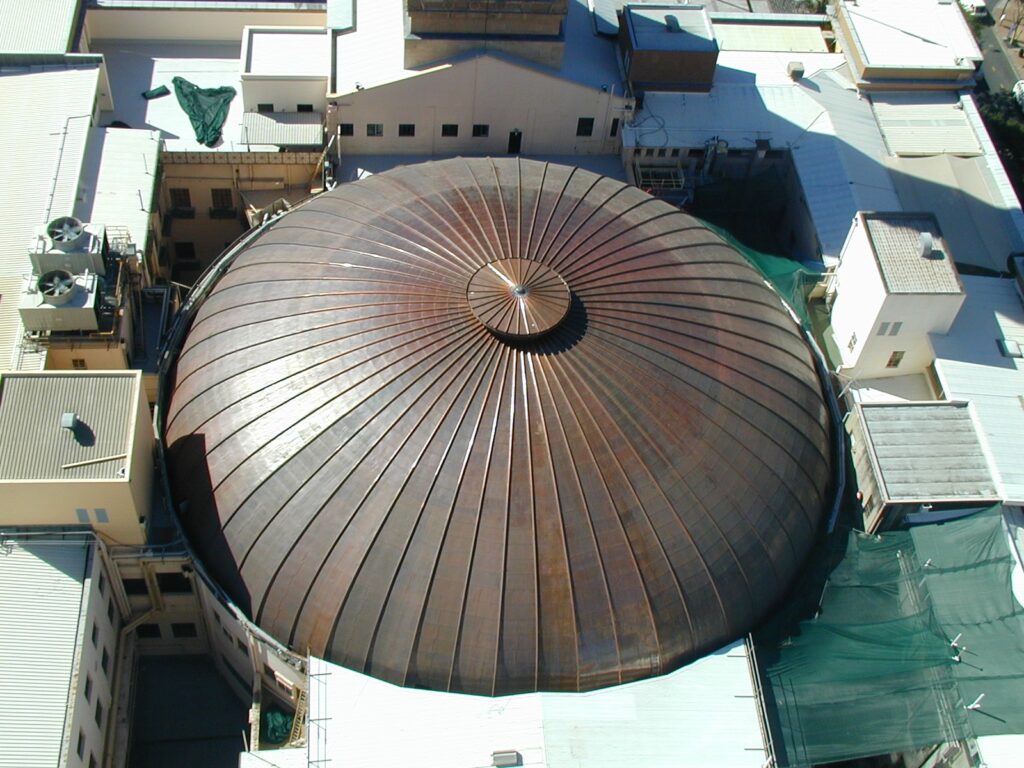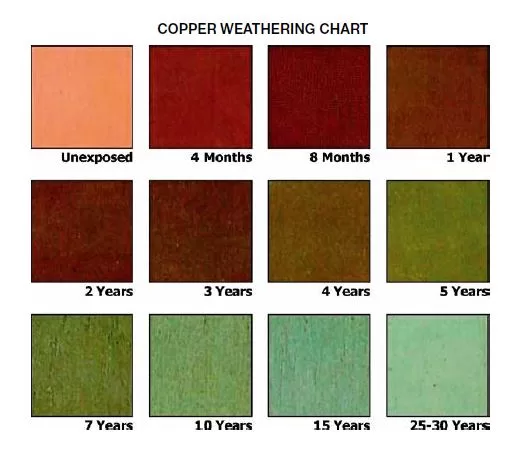

Unused chunks should be sealed and stored in a cool, dry, and dark location. The solution will deteriorate rapidly so it is recommended to only mix enough for a day or so. Liver of Sulfur may be used hot or cold and must be water rinsed to stop the reaction. It is most commonly used as a base patina to increase contrast between light and dark areas. Depending on the surface, the strength of the solution, and the application method, it will produce a golden brown to a burgundy black patina. Liver of Sulfur is the classic darkening patina for bronze, brass, and copper. Heat will darken the color as well as reduce mottling. On heated iron or steel, a dark chocolate finish will result. When applied cold to iron or steel, a brown rust will form. Japanese Brown may be used on bronze, brass, and copper resulting in a golden brown finish, but it is most commonly used hot or cold on iron and steel. Multiple coats will produce a strong gold color. It will immediately cause a soft brass or light gold finish, but will take 3-5 minutes to fully develop with agitation depending on the surface. Honeycomb Patina is applied cold to all metals and should not be diluted before use. On bronze, brass, and copper the patina is a warm brown. Honeycomb Patina causes a golden brown finish on iron, steel, aluminum, zinc, and stainless steel. Ferric Nitrate/Ferric Chloride Patina does not need to be diluted before use. Additional coats will turn darker brown and more opaque. Similar to Ferric Nitrate Patina, the final color and opacity is determined by the application process. On zinc, the result is a yellow brown finish.įerric Nitrate/Ferric Chloride Patina produces a transparent red brown finish when applied hot to bronze, brass, and copper.

On iron and steel, this process generates a stable orange rust. On iron, steel, and zinc, Ferric Nitrate Patina is applied cold and takes hours to develop. Ferric Nitrate Patina is commonly used over a Liver of Sulfur base to produce a chocolate brown patina. Additional coats will turn dark burgundy to brown and more opaque. Lighter applications will be transparent golden brown. The final color is determined by the strength of the solution, amount applied, surface preparation, and the temperature of the metal during application. It does not need to be dilutued before use. Additional coats will darken the patina.įerric Nitrate Patina creates a transparent brown patina when applied hot to bronze, brass, and copper. Deep Brown Patina does not need to be diluted, but may be thinned with distilled water for lighter coats or colors. It should not be used on stainless steel. On zinc, the finish is a fast developing yellow brown. On iron and steel, it will produce a quick dark brown patina with greys and blacks. On zinc, this patina will also be black.ĭeep Brown Patina creates a slow reacting brown finish on bronze, brass, and copper. On iron and steel, Darkening Patina will create a grey to black finish. Normal colors will range from golden brown to very dark brown (almost black). This patina is often diluted with distilled water before use to lighten the color. It does not need to be diluted before use.ĭarkening Patina is most commonly used cold on bronze, brass, and copper to produce a beautiful brown finish. Applied cold, this patina will develop a copper color on steel and a grey finish on zinc. Copper Rust Patina does not work on the Metal Coatings.Ĭopper Sulfate Patina creates a brown finish as a hot patina on bronze, brass, and copper. It will blacken iron and steel if applied hot. This cold patina should not need to be diluted. Diluting should not be necessary with this formula.Ĭopper Rust Patina causes a red to brown finish on bronze, brass, and copper. However, it can be used as a base for the Traditional Torch Patina. Copper Plating does not work with the Metal Coatings or most other patinas such as Tiffany Green. Applied cold, lighter coats will develop a salmon copper color while heavier coats will produce darker copper colors.

This cold patina is commonly used on the Metal Coatings and as a base for Traditional Green Patinas.Ĭopper Plating Patina produces a copper finish on iron and steel. Antiquing Patina does not need to be diluted, but may be thinned with distilled water for a lighter finish.

On iron, steel, aluminum, and zinc, it will produce a grey to black patina. ft.Īntiquing Patina creates an aged brown to black finish on bronze, brass, and copper. One gallon of Traditional Brown Patina generally covers 200 sq. Liver of Sulfur is sold as a powder in 2oz., 4oz., and 16oz. Traditional Brown Patinas are available in 8oz., 32oz., 1 gallon, and 5 gallon sizes.


 0 kommentar(er)
0 kommentar(er)
